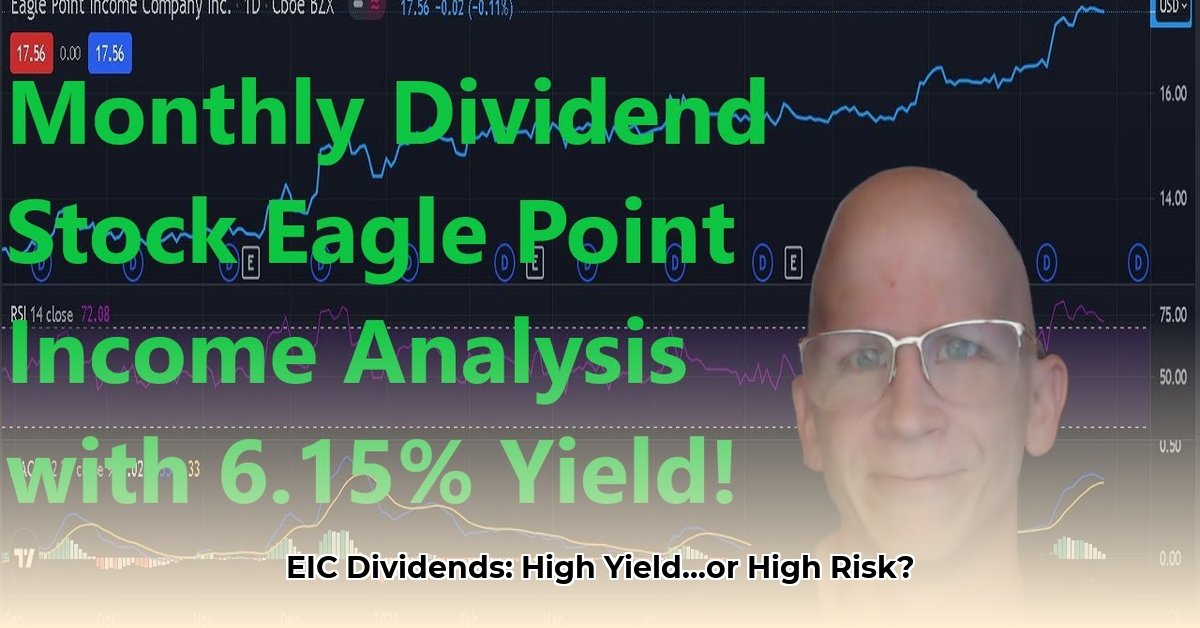
EIC's enticing 15.14% dividend yield—a substantial $2.40 annually, paid monthly—immediately attracts attention. But is this lucrative opportunity too good to be true? This in-depth analysis dissects EIC's dividend history, revealing potential risks and offering actionable strategies for investors of all levels. We'll explore the financial implications of a payout ratio exceeding 100%, and we'll examine the practical steps needed to make informed investment decisions.
A Closer Look at EIC's Dividend Payments
For six consecutive years, EIC has steadily increased its dividends, culminating in an impressive 8.11% surge last year. This consistent growth is undeniably attractive. However, a significant caveat exists: EIC's payout ratio surpasses 100%. This means the company distributes more in dividends than it earns in profit. Isn't this alarming, given that the company is essentially financing its payouts through methods beyond its earnings? This raises serious questions about the dividends' long-term sustainability.
Decoding the Over 100% Payout Ratio
An over 100% payout ratio is a major warning sign. It suggests EIC is likely employing financial strategies—potentially debt financing, asset sales, or other methods—to fund its dividend payments. While not inherently negative, this practice warrants careful scrutiny. A downturn in profitability could force drastic dividend cuts, significantly impacting the share price. This inherent risk necessitates a cautious approach from investors.
Beyond the Dividends: A Deeper Financial Checkup
Understanding EIC's dividend policy requires a broader financial assessment. Key factors influencing sustainability include:
Debt Levels: High debt burdens can severely constrain a company's ability to sustain high dividend payments. Does EIC have high debt levels? Without access to their financial statements, this is a crucial detail that requires more investigation.
Earnings Growth: Consistent earnings growth is essential to support generous dividends. Is EIC demonstrating sustainable profit growth? Without access to current financials, a full assessment isn't possible.
Industry Competition: Intense competition can hinder profitability, putting pressure on dividend payouts. How competitive is EIC's industry, and how well-positioned is the company for sustained performance? Further research into the industry context is vital.
Investment Strategies: A Personalized Approach
EIC's high-yield, high-risk profile necessitates tailored investment strategies depending on individual risk tolerance and investment goals:
| Investor Type | Short-Term Strategy | Long-Term Strategy |
|---|---|---|
| Income-Seeking | Diversify investments; closely monitor EIC's dividend announcements. | Conduct thorough due diligence; develop a plan for potential dividend cuts. |
| Growth-Oriented | Exercise extreme caution; the high risk likely outweighs potential rewards. | Avoid unless EIC demonstrates significant and sustained improvements in financial health. |
| Risk-Averse | Avoid investing in EIC altogether. | Absolutely avoid unless comfortable with high potential for principal loss. |
Managing the Risks: Practical Steps
Investors can mitigate risks associated with EIC's high-dividend strategy through:
Diversification: Spread investments across various assets to lessen the impact of potential dividend cuts. A diversified portfolio, including assets negatively-correlated to EIC's sector, can mitigate risk.
Monitoring: Continuously monitor EIC's financial performance and dividend policy changes. Staying updated is crucial for early detection of any shifts in the company's outlook and financial health.
Realistic Expectations: The high yield shouldn't overshadow the potential for capital losses. Consider both dividend income and the possibility of principal loss in your risk assessment model.
The Final Verdict: A Cautious Approach
EIC's high dividend yield is alluring, but the unsustainable payout ratio serves as a significant warning. Before investing, thorough due diligence is paramount. This includes a detailed review of EIC's financial statements, supplemented by independent research to assess their financial health and the probability of future dividend reductions. While high returns are possible, significant losses are also a real possibility. Your investment decision should reflect your individual risk tolerance and financial objectives. Remember that a thorough understanding of a company's current financial health is mandatory before any investment decision.